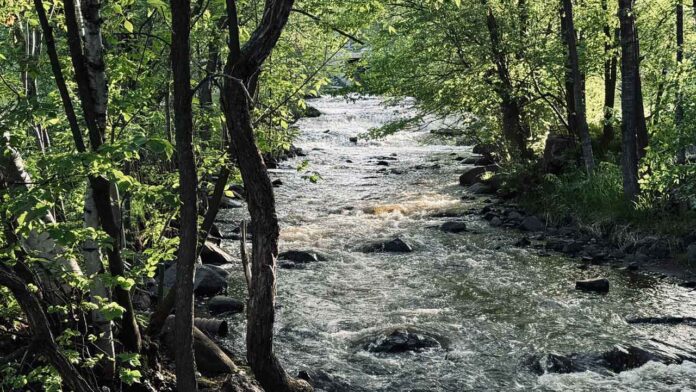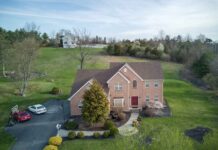Among creativity and nature, an intricate point of meeting in harmony, exciting the senses, and moving the soul, a lively dance is aroused. This magical meeting line is now called Landscaping : rich greenery, vivid colors, and great design melt into an artistic symphony of beauty and usefulness. Now, just imagine this: losing one’s way in a garden where every plant fits just in its perfect place, each stone is ideally located, and every curve seems it might lead your eye to the perfect vista. Landscaping is not about placing plants or making a path; instead, it is one form of art that turns outdoor spaces into living pictures, inducing peace of mind, inspiration, and awe. Come with us on this enchanting journey through the meeting of Nature’s abundance and human wisdom—welcome to the world of landscaping: where Nature and Design converge.
Blending Aesthetics and Functionality in Landscaping
Aesthetics work in landscaping to bring about an outstanding balance with functionality, hence further beautifying a view into an art piece. It involves the infusion of beautiful aspects such as colorful flowers, lush greenery, and artistic hardscape features that not only enhance the visual appeal but also serve a functional purpose. This is adding native plants into designs, not only for the touch of nature they bring within your design, but also to support local wildlife that needs lower maintenance.
Further, water features and architectural landscape areas combine aesthetic elements with landscape functional characteristics containing proper drainage solutions, making it viable for long-term sustainability. Consider both form and function in landscaping, and a harmonious blend will bring eye appeal and usability to outdoor spaces for relaxation or entertainment. Deep down, the people at GTA Sunrise, a landscaping company in Toronto, know well enough that aesthetic horticulture paves the way for purposefully designed landscaping. A place where beauty harmonizes with purpose can only be coined as an oasis that gives one auditory and visual pleasure.
Making the Natural and the Hardscape Work in Harmony
Imagine a garden where soft wind chimes harmoniously play fugue with the soft rustling of the bamboo leaves amidst the laid stone paths. All these elements come together into perfect hardscaping, and natural elements represent themselves even more when each part complements the others. Strategic integration of water features, artistic stonework, such as statuettes, and native plants in this natural setting not only adds, but the combination itself represents an earnest, consoling oasis—it means more, just in visual observation, that inspires.
The trick lies in realizing that nature does not stand as a mere background of design but rather is a partner in the affection for good that soothes the urgings and delights the soul. I am treating that partnership as one vital aspect enables creative outdoor rooms that are received as more than just an aesthetic but serve to instill a true sense of calm and peace in one’s natural surroundings. When artistically combined, the natural elements and hardscapes weave balance in texture, color, and sound to transform any space into a live tapestry.
Innovative Design Ideas to Enhance Outdoor Spaces
The fantastic thing about creative design is that it gives outdoor spaces a touch that imaginably enhances the outside environment. One idea that is catching up very fast with a stampede now is that of vertical gardening—where our walls transform into a beauty of green color—giving both big and small setups a whole new face. Another trend is catering to modernism by using sustainable materials when creating outdoor furnishings incorporating reclaimed wood and recycled plastics, keeping that contemporary edge while being more ecologically sound.
In this concern, modular seating has now been integrated with great flexibility in lighting schemes, which can easily be rearranged to expose changeable events. The idea of the outdoor room was also born to get different functional zones within one space and create jeweled settings for relaxation or dining under nature’s canopy. By embracing these innovative design ideas, the outdoor living spaces of a homeowner can be transformed into a dynamic extension of their living space with no bounds to creativity.
Sustainable Landscaping Practices
In the new era, with growing awareness of the environment through various human activities, sustainable landscaping has been brought to the forefront. It is accepted as a needy performance in responsible land management. Planting local plants in our landscapes brightens up our surroundings and, at the same time, adds significant value to local solid ecosystems with a superior level of biodiversity. These greeneries naturally adjust to regional climate and soil conditions and, in most cases, will have to use less water and maintenance than other alien species.
The permeable paving also helps to reduce storm runoff when used in driveways and patios in hardscape, and allows groundwater recharge. It’s friendly simply because it doesn’t allow erosion, it does away with the risk of floods, and it minimizes pollutants—all due to causing rainwater to infiltrate the ground slowly. By using sustainable landscaping, the environment benefits, and the quality of life is enhanced for the present and future generations by creating healthy and resilient outdoor spaces.
Planting Native Plants in Your Low-Maintenance Garden
Using native plants in your design will add a touch of natural beauty to it and provide a myriad of benefits that go far beyond the aesthetics. It is in the very nature of a local habitat that these plants are very low-maintenance and resistant to both aggressive insects and diseases. That way, you will develop a self-sustaining ecosystem that needs less water, fertilizer, and upkeep.
Most importantly, one contributes to the conservation of indigenous flora by going in for these region-specific plants—one of the best ways to add local character while, in our small way, helping to preserve the unique character of our local communities, one garden at a time, for generations to come. That native mix also attracts other local wildlife, such as butterflies, birds, and beneficial insects like bees, boosting biodiversity and giving maximum pollination and natural pest control in your garden. Most importantly, by going in for these region-specific plants, one contributes to the conservation of indigenous flora, which helps to preserve the environment. Using native plants in your garden creates this harmony between nature’s resiliency and design with intention.
Water-conserving Landscaping Techniques for Environment-friendly Lawns
Being one of the most critical resources, water would definitely be conserved with effective landscaping. Essentially, xeriscaping is a procedure for effective landscaping and involves the usage of drought-tolerant plants, that is, those plants that do not need much watering. More so, incorporating natural flora into the yard reduces water use because the plants will have experienced attunement to the characteristics of the land and might thus need less irrigation. Mulching your garden beds adds even more water retention and decreases the need for watering very often; it helps suppress weeds.
Irrigation system improvement, alongside plant choice and mulching, is another way you can increase water use efficiency in your yard. This can be applied using a drip irrigation system, which is much more efficient than usual watering because the water directly reaches the roots with minimal evaporation and runoff. The sensors in the soils, embedded into the irrigation set up in the area, will show that water flows when needed, which would all the more confirm eco-friendly landscape design. All these water-efficient landscapes help provide not only aesthetic beauty to the yard but also toward living sustainably, which would help the surroundings and the pocket in the long run. If you have any hesitations or concerns about your landscaping ideas, pick this website for advice or inspiration.






